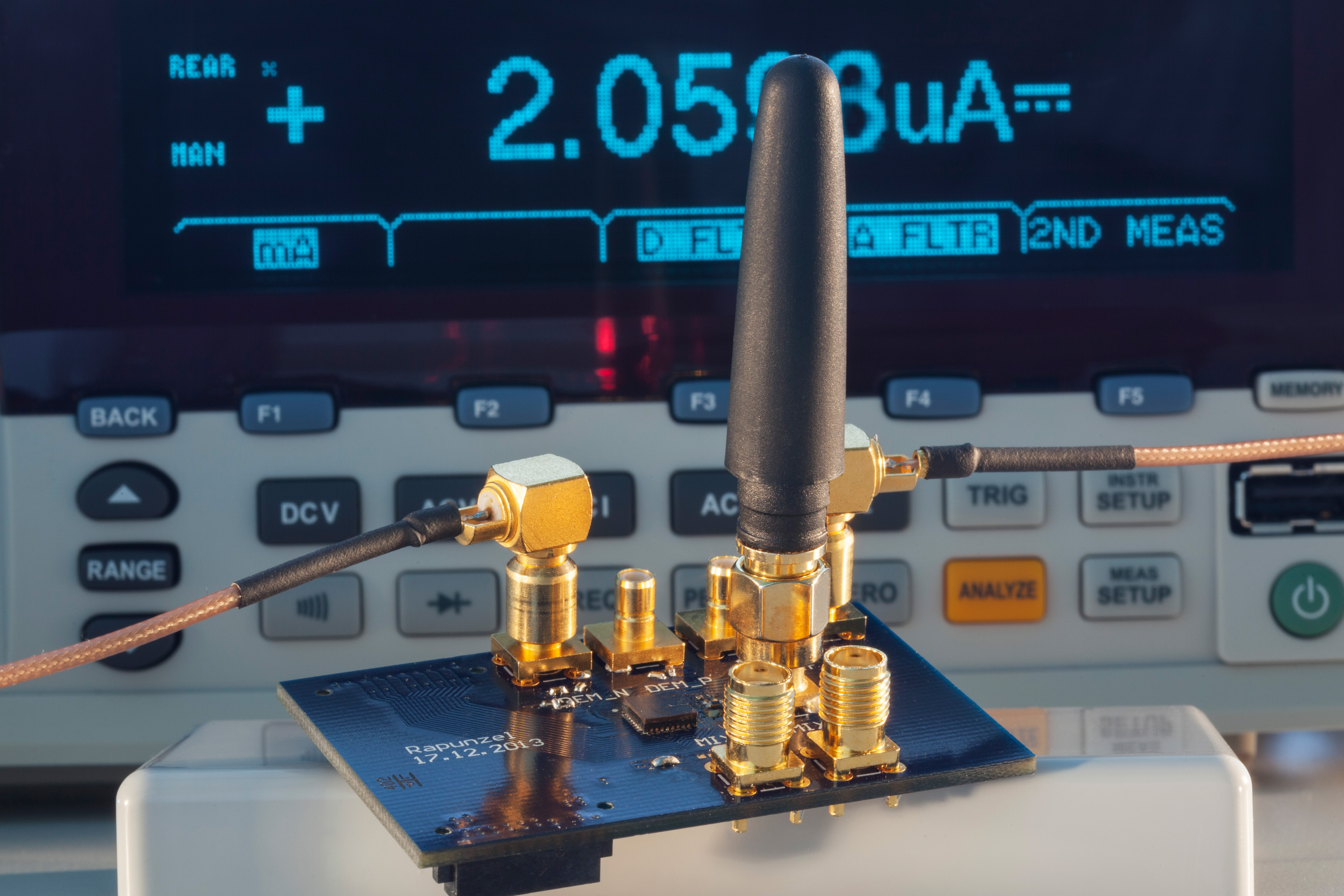Energy-saving WakeUp-Receiver for the “Internet of Things”
Erlangen/Munich, Germany, November 3, 2014 – electronica, Hall A, Booth 113: The WakeUp-Receiver developed by the Fraunhofer Institute for Integrated Circuits IIS can continuously operate and receive wireless signals for years on a µ-Watt power source. The device, which functions without a microcontroller, boasts a fast response time of 32 ms and is suitable for around-the-clock moni-toring of wireless sensor networks. Power can be supplied via energy harvest-ing technology.
The Fraunhofer WakeUp-Receiver technology significantly increases the operating life of wireless receiver systems. In terms of energy consumption and data rates, the device can be configured in a wide range, thus ensuring several years of battery operation or fully autonomous operation via energy harvesting.
The WakeUp-Receiver continuously monitors the wireless channel – without the use of a microcontroller – and recognizes two separate wake-up patterns. Apart from the pure WakeUp mode, coded data can also be received. Furthermore, a selective wake-up of certain wireless nodes can be performed, using a 16-bit address.
Millisecond response time
The current prototypes, which are based on 130 nm CMOS technology, operate in the 868 MHz and 2.4 GHz frequency bands and feature -80 dBm sensitivity. When operating in the standard configuration at a data rate of 1 kbit/s, energy consumption is reduced to a mere 3 µA with a response time of 32 ms.
Wide range of applications
The Fraunhofer WakeUp-Receiver technology represents a key technology for the “Internet of Things” and “Smart Object” environments. It offers utility across a wide range of applications including building automation, intelligent lighting, electronic labels, remote maintenance, remote control and wireless sensor networks.
